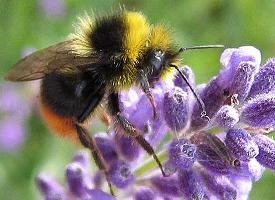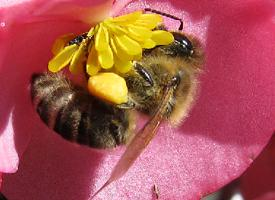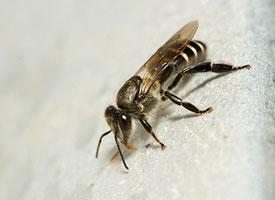
Súlyok és méretek
| Hossz | 9-tól 17-ig mm |
|---|
Állatleírás
The Early bumblebee, scientifically known as Bombus pratorum, is a fascinating and industrious member of the bumblebee family, playing a crucial role in pollination processes across its habitats. This species, known for its early emergence, often signals the arrival of spring, making it a vital pollinator for a wide variety of plants during this crucial season.Physically, the Early bumblebee presents a small to medium-sized body, with queens typically measuring between 15 to 17 mm, workers around 9 to 14 mm, and males approximately 10 to 13 mm in length. Its appearance is characterized by its distinctive coloration, which includes a black head, a yellow collar near the head, and another yellow band on the abdomen. The tail is usually a vivid orange or red, making it one of the more easily identifiable bumblebees in its range. However, coloration can vary, and in some individuals, the yellow bands may be less pronounced or the tail may appear more buff-colored.
The Early bumblebee is widely distributed across Europe and parts of Asia, thriving in a variety of habitats that include gardens, meadows, parks, and woodland edges. Adaptability to different environments is one of the strengths of this species, allowing it to be one of the first bumblebees to emerge, sometimes as early as March or April, depending on the climate.
Its diet primarily consists of nectar and pollen, which it gathers from a variety of flowers. The Early bumblebee has a short proboscis, which influences its preference for flowers with short corolla tubes. Despite this, it demonstrates remarkable adaptability in its foraging habits, visiting a wide range of flowers, including those of raspberries, bluebells, and comfrey, among others. This not only aids in the pollination of these plants but also ensures a diverse diet for the colony.
Social structure within Early bumblebee colonies is similar to that of other bumblebee species, with a single fertile queen who emerges in the spring to establish a new nest. After mating, the queen lays eggs that develop into workers, which then take over the duties of foraging and nest maintenance. By mid-summer, new queens and males are produced, which leave the nest to mate, and the cycle begins anew. Colonies are relatively small, often consisting of fewer than 100 individuals, and they are annual, with only the newly mated queens overwintering to start new colonies the following year.
Conservation status of the Early bumblebee varies by location, but like many pollinators, it faces threats from habitat loss, pesticide use, and climate change. Efforts to protect and conserve its habitat, along with promoting practices that support pollinator health, are crucial for ensuring the survival of this essential species.
In summary, the Early bumblebee is a key pollinator with a distinctive appearance and an important role in the ecosystems it inhabits. Its early emergence and adaptability to a variety of environments make it a vital component of spring pollination, supporting the health and diversity of plant life across its range.
Hasonló állatok
Új állatfotók
Top 10 állat
- Dolphin gull (Leucophaeus scoresbii)
- Diana monkey (Cercopithecus diana)
- Japanese macaque (Macaca fuscata)
- Galápagos tortoise (Geochelone nigra complex)
- Stone loach (Barbatula barbatula)
- Moustached guenon (Cercopithecus cephus)
- Russian tortoise (Testudo horsfieldii)
- Common house mosquito (Culex pipiens)
- Japanese spider crab (Macrocheira kaempferi)
- Giant peacock moth (Saturnia pyri)


